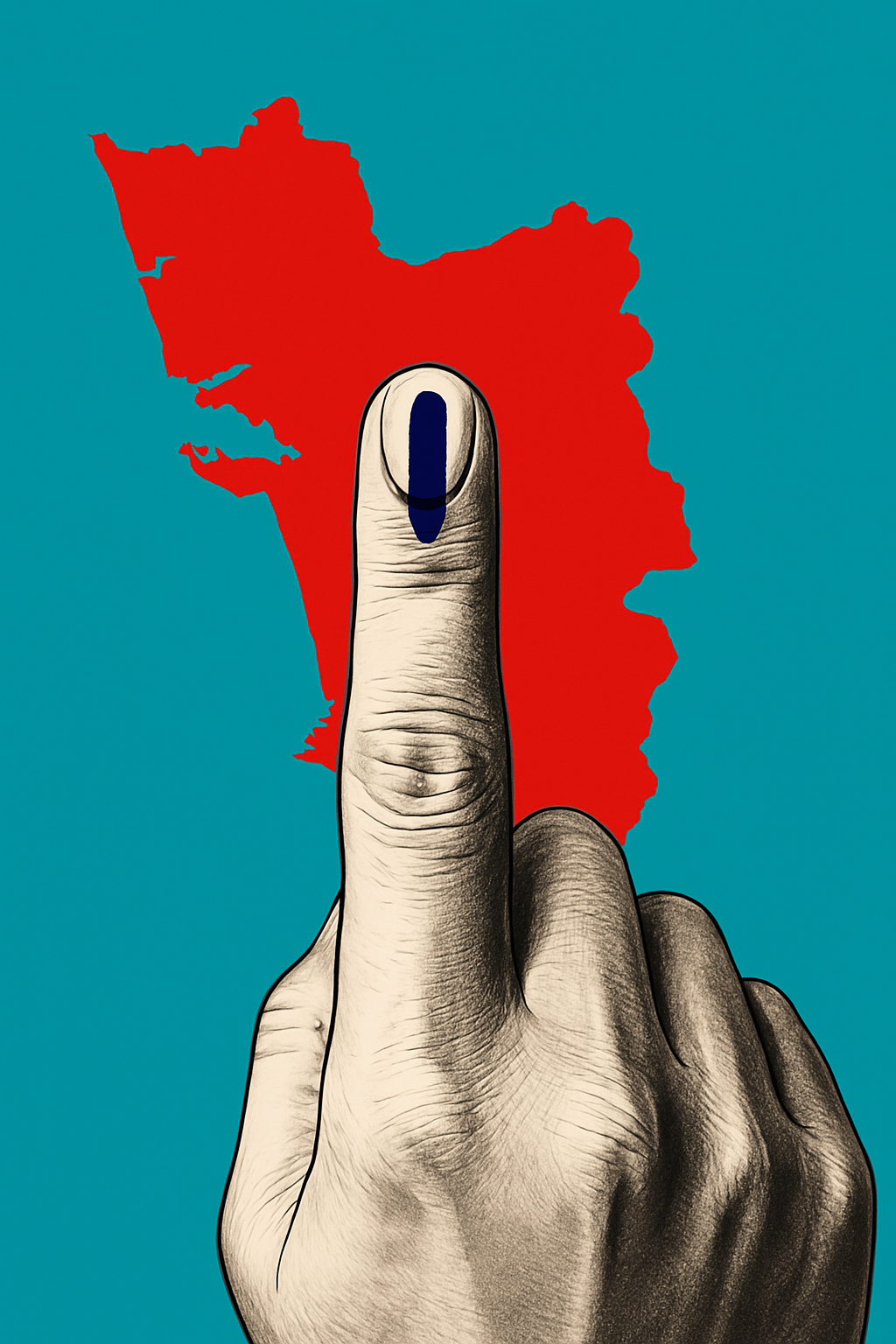Goa’s political landscape is being reshaped by the growing influence of migrant communities, whose votes are now central to electoral outcomes in key constituencies. From Bardez to Mormugao and Salcete, the debate over identity, belonging, and representation has intensified, with parties and leaders navigating a delicate balance between local sentiment and migrant aspirations. The Goan examines this evolving dynamic as the Zilla Panchayat elections approach
PANAJI
A comment of Siddhanna Meti, president of the Kannada Cultural Association, apparently directed at Manoj Tukaram Parab, head of the Revolutionary Goans Party (RGP), taking objection to the slur 'ghati', has reignited the long-standing locals-versus-migrants debate in Goa, a touchy issue with the potential to muddy an already wayward and chaotic political narrative in the run-up to the upcoming Zilla Panchayat elections scheduled for December 13 and further on to 2027. Meti, who was speaking at a recent cultural gathering, condemned the use of the term “ghati” — a slur often directed at migrants from Karnataka and Maharashtra — and accused the RGP of stoking xenophobic sentiments.
Meti, who was speaking at a recent cultural gathering, condemned the use of the term “ghati” — a slur often directed at migrants from Karnataka and Maharashtra — and accused the RGP of stoking xenophobic sentiments.
“The RGP is dividing Goans by discriminating against migrants, just like the British did to maintain control,” Meti said, adding, “We love Goa more than Manoj Parab does. His MLA won only by playing the ‘ghati-ghati’ card.”
In a sharp rebuttal, Parab defended his party’s stance on preserving Goan identity and in turn accused Meti of trying to polarise voters by playing the victim card.
"RGP stands for Goan identity and will not be bullied into silence,” he said in a press briefing, accusing Meti of attempting to leverage the migrant vote for political gain.
The controversy, meanwhile, has sparked widespread debate on social media and in local media outlets, with many questioning the role of migrant communities in shaping Goa’s electoral outcomes.
Meti’s assertion that Kannada-speaking migrants have the numbers to influence multiple Assembly constituencies has drawn attention to areas like Vasco da Gama, Mormugao, Sancoale, and Cortalim — regions where migrant populations have grown significantly over the past decade. Some other segments like Calangute, Mapusa, Navelim, and Cuncolim, among others, also account for a significant chunk of ethnically non-Goan voters. Even Margao, Panaji, and Taleigao segments have a chunk of migrant voters.
Political analysts note that these constituencies could become swing zones in both the upcoming ZP elections and the 2027 Assembly polls, and how politicians and political parties navigate the delicate path of striking a balance between the two sides will have to be closely watched.
“The migrant vote is no longer peripheral in at least a dozen constituencies — it’s central to the electoral arithmetic. Parties like the BJP and Congress have historically engaged migrant communities through welfare schemes and representation, while a newer entrant like AAP is trying to appeal to the urban settlers with governance-focused campaigns,” said a senior political analyst.
Meanwhile, regional parties such as the RGP and Goa Forward Party (GFP) have doubled down on their nativist messaging, emphasising cultural preservation and local rights. This has created a paradox: while some parties decry the erosion of Goan identity, they simultaneously appear to be courting migrant voters for electoral advantage.
The strategic voting behaviour of migrant communities could have far-reaching consequences. In the short term, it may influence ZP outcomes in constituencies with high migrant density — Sancoale, Chicalim, and Cortalim in the South, and Calangute and Tivim in the North.
In the long term, it could also reshape the Assembly map in 2027, potentially altering alliances, candidate selections, and policy priorities.
As the debate intensifies, civil society groups have called for a more inclusive discourse.
“Goa’s identity is not static — it’s evolving,” said a spokesperson for a Panaji-based cultural forum.
“We must find ways to integrate diverse communities without erasing the essence of Goan heritage,” he added.
With the ZP elections just weeks away, all eyes are on how parties will navigate this sensitive terrain. Whether the migrant vote becomes a unifying force or a divisive wedge remains to be seen — but its political potency is no longer in doubt.
====
Migrants a political variable as CM links crime to outsiders
Chief Minister Pramod Sawant waded into the issue, possibly unintentionally, by attributing a recent spike in violent crime to migrant populations, citing the murder at Morjim and the double homicide in Saligao as examples.
Speaking to reporters earlier this week, Sawant had said: “Migrants are responsible for the rise in crime in Goa,” but did not elaborate or back his claim with data or statistical evidence.
While suspects in both cases are reportedly non-Goan, critics argue that the Chief Minister’s statement risks stereotyping entire communities without factual backing. Law enforcement agencies have not released comprehensive crime data linking migrants to a disproportionate share of criminal activity.
The remarks, coming as they do amid heightened tensions over the locals-versus-migrants identity debate, were reignited by recent exchanges between Kannada Cultural Association president Siddhanna Meti and Revolutionary Goans Party leader Manoj Parab.
On social media, some voices echoed Sawant’s sentiment, suggesting migrants are often involved in “illegal activities,” while others condemned the rhetoric as divisive and inflammatory.
As Goa heads into the Zilla Panchayat elections, the politicisation of crime and identity threatens to deepen social fault lines and pepper the political discourse going into these rural elections and possibly to the Assembly elections due in 2027.